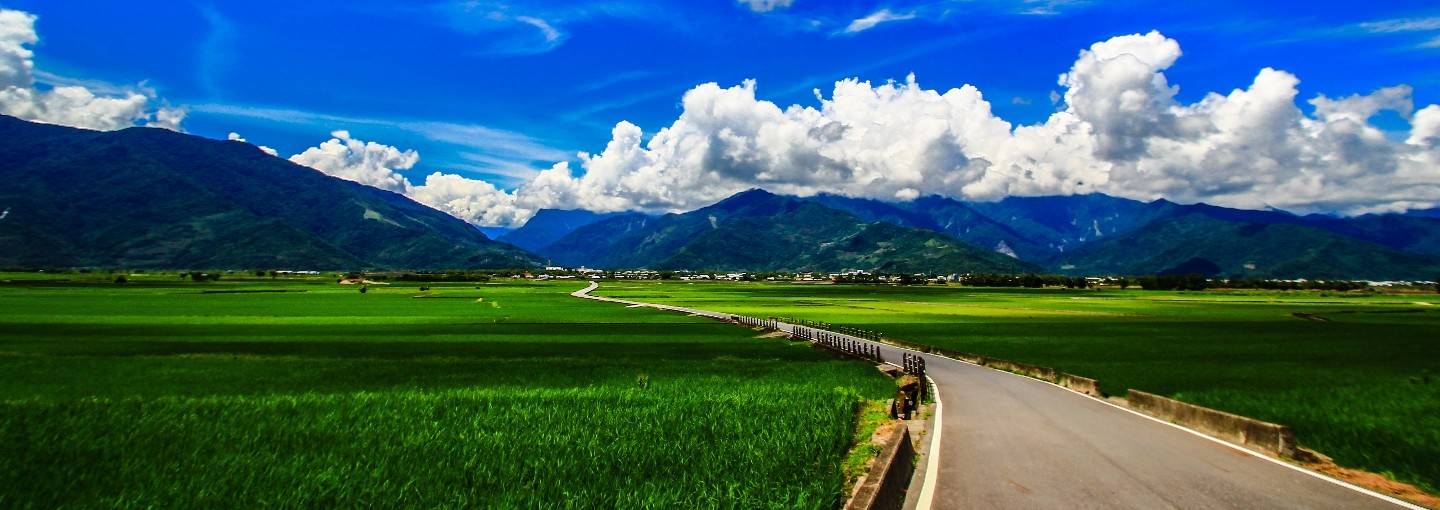Formosa ("Beautiful Island")
Formosa is what the Portuguese called Taiwan when they came to the East in the 16th century and saw the verdant beauty of the island from Pacific Ocean while sailing to Japan.
Located off the southeast coast of the Asian Continent at the western edge of the Pacific Ocean, between Japan and the Philippines and right in the center of the East-Asian island arc, Taiwan forms a vital line of communication in the Asia-Pacific region. It covers an area of approximately 36,000 square kilometers (14,400 square miles) and is longer than it is wide. Two-thirds of the total area is covered by forested mountains and the remaining area consists of hilly country, platforms and highlands, coastal plains and basins. The Central Mountain Range stretches along the entire country from north to south, thus forming a natural line of demarcation for rivers on the eastern and western sides of the island. On the west side, lies the Yushan (Yu Mountain) Range with its main peak reaching 3,952 meters, the highest mountain peak in Northeast Asia.
The Mountains
Taiwan has been abundantly endowed with mountains; over 200 of its peaks are more than 3,000 meters high, making Taiwan geographically unique. As mountains can be found anywhere, mountain climbing is a popular leisure activity in Taiwan. One can choose to hike the mountains on the outskirts of the city or accept the challenge of climbing one of the numerous high mountains, following the course of streams and valleys, tracing back to the source of rivers, or crossing entire mountains. In any case, lush scenery will unfold your eyes and it will not take too long for you to be convinced of the beauty of Taiwan's mountains.
In addition, there are nine national parks which offer a variety of distinct topographic landscapes: the Taroko National Park, focused on a narrow ravine created by a river which has cut through the mountains; Yushan National Park, containing the highest landmark of Taiwan and also the highest peak in Northeast Asia; Shei-pa National Park, featuring dangerously steep slopes; Yangmingshan National Park, with its volcanic craters and lakes; Kenting National Park, encompassing the only tropical area in Taiwan which breathes a truly Southeast Asian atmosphere; Kinmen National Park, which greets visitors with white coral and shell beaches and other geological wonders. Finally, both culture and natural attrations await your discovery at Taijiang National Park.
Sea World
Taiwan has a very rich marine ecology. You can see a groups of bottlenose dolphins, spinner dolphins, Risso's dolphins, and pan tropical spotted dolphins jumping out of the Pacific Ocean along the east. Azure seas and magnificent coral reefs can be found in Kending (Kenting) at the southern tip of Taiwan, and on Green Island and the Penghu Archipelago. This is a place for you to discover and be amazed.
Eco-park
Taiwan has a warm and humid climate and a variety of terrain, including sandbars, plains, basins, hills, plateaus, and mountains. As a result, the country is home to abundant animal and plant life, including various endemic species, and can therefore be regarded as one gigantic eco-park. Because of the formation of mud flats and mangroves along the coast, large numbers of migratory birds from around the world are attracted to Taiwan, where they use these coastal areas as a temporary shelter and rest area before they resume their journey. In spring and summer time, there are the birds that leave the tropics behind to spend this season in Taiwan, such as the eye-catching fairy pitta, known in Chinese as the eight-color bird. During autumn time, birds from colder northern areas come to Taiwan to spend the winter, such as the black-faced spoonbill. The gray-faced buzzard will be right on time to participate in the Double Ten celebrations (Taiwan's national day) in October each year, and there are also countless other migratory birds that use Taiwan either as a stopover or as their final destination, one way or the other adding exuberant vitality to the island's wildlife.








